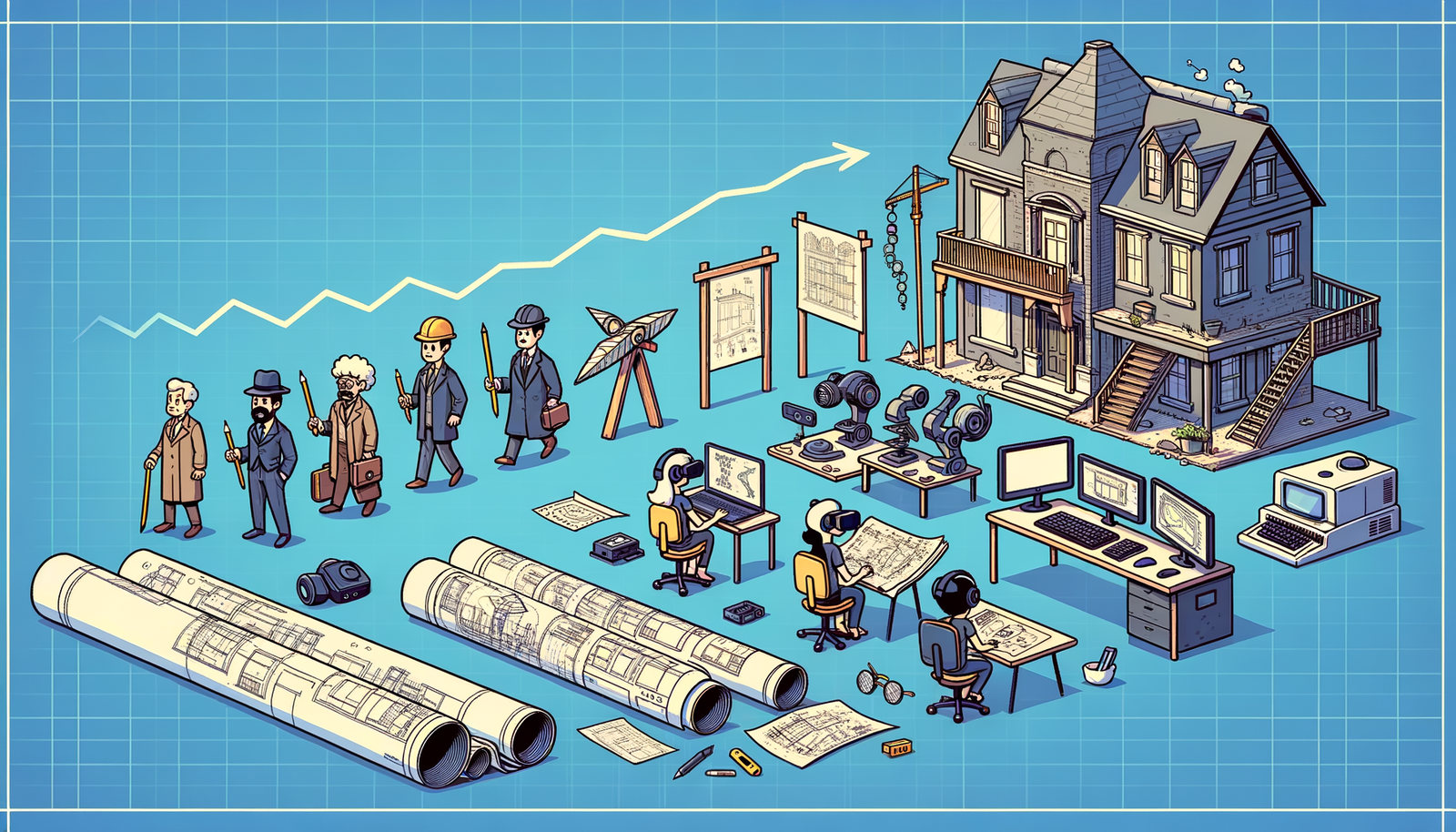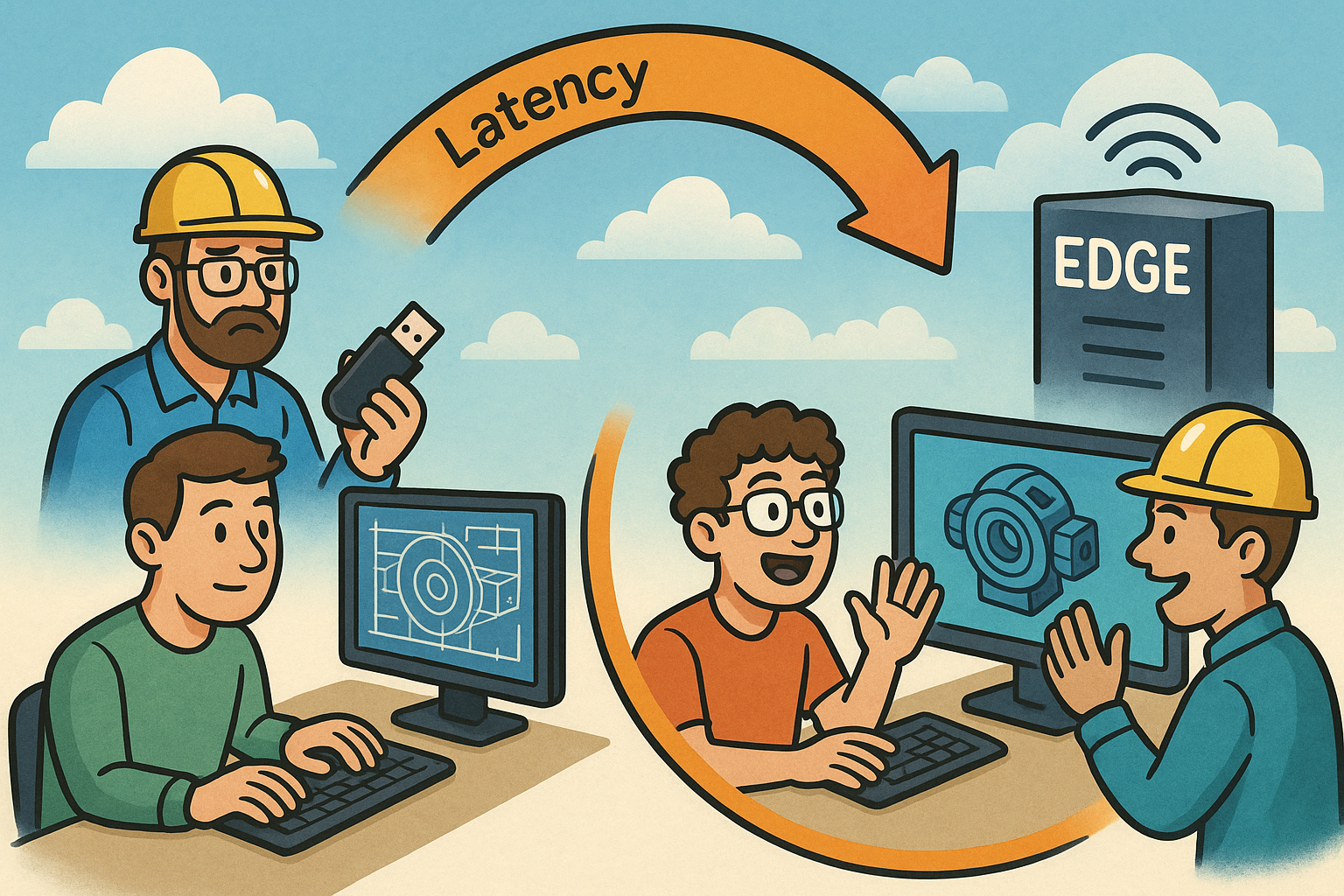Your Cart is Empty
Customer Testimonials
-
"Great customer service. The folks at Novedge were super helpful in navigating a somewhat complicated order including software upgrades and serial numbers in various stages of inactivity. They were friendly and helpful throughout the process.."
Ruben Ruckmark
"Quick & very helpful. We have been using Novedge for years and are very happy with their quick service when we need to make a purchase and excellent support resolving any issues."
Will Woodson
"Scott is the best. He reminds me about subscriptions dates, guides me in the correct direction for updates. He always responds promptly to me. He is literally the reason I continue to work with Novedge and will do so in the future."
Edward Mchugh
"Calvin Lok is “the man”. After my purchase of Sketchup 2021, he called me and provided step-by-step instructions to ease me through difficulties I was having with the setup of my new software."
Mike Borzage
Design Software History: The Evolution of Architectural Visualization: Game Engines Transforming Design Processes
October 29, 2024 7 min read


Introduction
Architectural visualization has always been a cornerstone of the design process, serving as the bridge between abstract concepts and tangible realities. It allows architects and designers to communicate their visions effectively, enabling clients and stakeholders to comprehend and engage with proposed structures long before they are built. In the modern context, architectural visualization has transcended traditional static representations, evolving into dynamic and interactive experiences that leverage cutting-edge technology. Among these technological advancements, game engines like Unity and Unreal Engine have emerged as pivotal tools, revolutionizing the way architectural projects are conceptualized, presented, and experienced.
The integration of game engines into architectural visualization signifies a significant shift from conventional methods. Unity and Unreal Engine, renowned for their capabilities in the gaming industry, offer powerful features that enhance the realism and interactivity of architectural models. This evolution is not merely a trend but a response to the increasing demand for immersive and real-time experiences in architecture and design. As clients seek more engaging and intuitive ways to interact with designs, the adoption of these game engines addresses this need by providing unprecedented levels of detail and realism.
Traditional architectural design processes have historically relied on static images, physical models, and non-interactive 3D renderings. With advancements in technology, these processes have undergone significant transformations. The advent of computer-aided design (CAD) software and building information modeling (BIM) paved the way for more detailed and efficient design workflows. Now, with the introduction of game engines into the architectural sphere, there is a further enhancement, blending robust visualization capabilities with interactive functionalities. This synergy of architecture and gaming technology not only streamlines the design process but also opens new horizons for creativity and innovation in the field.
Game Engines in Architectural Visualization
At their core, game engines are software development environments designed for the creation and development of video games. They provide a suite of tools and features that handle various aspects such as rendering graphics, physics calculations, scripting, animation, artificial intelligence, and more. Unity and Unreal Engine are two of the most prominent game engines in the industry, known for their versatility and powerful feature sets. Traditionally, these engines have been employed to develop immersive and interactive gaming experiences, but their application has extended beyond gaming into areas like architectural visualization, simulation, and virtual reality.
The capabilities of Unity and Unreal Engine that facilitate architectural visualization are manifold. One of the most significant is real-time rendering and visualization. Unlike traditional rendering methods that can take hours to produce a single high-quality image, game engines render scenes in real-time, allowing instantaneous feedback and interaction. This ability transforms the way architects and designers work, enabling them to make quick adjustments and see the results immediately. It enhances the efficiency of the design process and allows for more iterative and exploratory approaches to design development.
Another critical capability is the provision of interactivity and immersive experiences through the integration of virtual reality (VR). Unity and Unreal Engine support VR out of the box, permitting users to experience architectural spaces in a fully immersive environment. This interactivity extends beyond mere visualization; clients and stakeholders can navigate through spaces, interact with objects, and get a genuine sense of scale and ambiance. Such experiences are invaluable in helping clients understand and connect with the design, leading to more informed decision-making and satisfaction.
The democratization of architectural design is another profound impact of these tools. By enabling designers to showcase projects in real-time, game engines break down barriers that previously limited the accessibility of high-quality visualization. Smaller firms and individual designers now have access to the same powerful tools as larger corporations, leveling the playing field. This democratization fosters innovation and competition, leading to higher quality designs and presentations across the industry. Furthermore, it empowers clients by providing them with a more engaging and understandable way to interact with architectural projects.
Applications in Architectural Visualization
The application of game engines in architectural visualization has opened up new possibilities for how designs are conceptualized, developed, and presented. Architects and designers are leveraging Unity and Unreal Engine to create highly detailed and interactive models that go beyond traditional visualization techniques. These tools allow for the incorporation of realistic lighting, materials, and environmental effects, enhancing the overall quality and realism of the visualizations. The ability to simulate different times of day, weather conditions, and other environmental factors provides a more comprehensive understanding of how a building will perform in real-world conditions.
In the realm of client presentations, the use of game engines has proven to be highly effective. Architects can now present their designs in a way that is both engaging and informative. Clients are no longer passive viewers but active participants in the design exploration. They can navigate through spaces at their own pace, focus on areas of interest, and even provide immediate feedback. This level of engagement enhances communication between the designer and the client, leading to a more collaborative and satisfying design process.
Industry trends indicate a growing acceptance and adoption of game engines in architectural workflows. The benefits of real-time rendering, interactivity, and immersive experiences are becoming increasingly recognized in the architectural community. As technology continues to advance, more architects are integrating these tools into their practices, seeking to improve efficiency, creativity, and client satisfaction. The shift towards interactive and immersive visualization represents a significant evolution in architectural design processes, one that is likely to continue as technology progresses.
To clarify the widespread applications of game engines in architecture, consider the following key areas where they are making an impact:
- Design Exploration: Enabling architects to iterate quickly and explore design options in real-time.
- Client Engagement: Providing interactive experiences that enhance client understanding and involvement.
Challenges and Future Directions
While the integration of game engines into architectural practice offers numerous benefits, it also presents several challenges. One of the primary obstacles is the learning curve for architects who are more familiar with traditional software tools like AutoCAD or Revit. Unity and Unreal Engine have their own unique interfaces and require a different skill set, often associated with game development. This necessitates additional training and a willingness to adopt new workflows, which can be a barrier for some practitioners. Overcoming this challenge involves investing time and resources into learning these platforms and understanding how they can be effectively integrated into existing processes.
Another challenge relates to the limitations of rendering high-fidelity visuals without high-end hardware. Achieving the level of detail and realism that clients expect can demand significant computing power. Not all firms have access to the necessary hardware, which can limit the quality of the visualizations produced. This can also affect the performance of interactive experiences, leading to issues with lag or lower frame rates, which can detract from the client experience. As hardware technology advances and becomes more affordable, this barrier is gradually diminishing, but it remains a consideration for many in the industry.
Looking towards the future, there are several exciting trends and developments on the horizon for architectural visualization using game engines. The potential impacts of artificial intelligence (AI) and machine learning are particularly noteworthy. AI can assist in automating certain aspects of the design and visualization process, such as generating realistic textures, optimizing lighting conditions, or even suggesting design modifications based on predefined parameters. This can significantly enhance efficiency and open up new creative possibilities for architects.
Another area of future development is the role of augmented reality (AR) in evolving how designs are showcased. AR has the potential to overlay digital architectural models onto the physical world, providing a seamless integration of the proposed design within its actual environment. This could revolutionize client presentations and site evaluations, offering an unprecedented level of context and realism. As AR technology becomes more sophisticated and accessible, it is likely to become a standard tool in the architectural visualization toolkit.
To summarize future directions, consider these key trends:
- Enhanced AI Integration: Utilizing AI for smarter design and visualization processes.
- Growth of AR: Implementing augmented reality for immersive and contextualized presentations.
Conclusion
In conclusion, the advent of Unity and Unreal Engine in the realm of architectural visualization marks a transformative period in design processes. These game engines have introduced powerful capabilities that elevate the quality and interactivity of architectural presentations. By harnessing real-time rendering, immersive VR experiences, and interactive functionalities, architects are able to convey their visions more effectively and engagingly than ever before. This not only enhances client understanding and satisfaction but also streamlines the design process through more efficient workflows and the ability to make instant modifications.
The continued importance of technological innovation in shaping the future of design processes cannot be overstated. As new tools and technologies emerge, they offer opportunities to overcome existing challenges and push the boundaries of creativity and efficiency in architecture. The integration of AI, machine learning, and AR into architectural visualization represents just the beginning of what is possible. Embracing these innovations is essential for architects who wish to remain at the forefront of the industry and meet the evolving demands of clients and stakeholders.
Therefore, it is imperative for designers and architects to explore and adapt these new tools to enhance their workflows and project presentations. By doing so, they not only improve their own practice but also contribute to the advancement of the architectural field as a whole. The fusion of architecture and game engine technology heralds an exciting future where designs are not just seen but experienced, offering limitless possibilities for creativity, collaboration, and innovation.
Also in Design News

Live Performance Budgets: Real-Time Cost, Carbon, Energy and Lead-Time in CAD/BIM
December 11, 2025 14 min read
Read More
Design Software History: From File-Shuttling to Edge: The Latency Evolution of Collaborative CAD and Real-Time Visualization
December 11, 2025 13 min read
Read More
Cinema 4D Tip: Cinema 4D Soft Body Quick Setup & Parameter Tuning
December 11, 2025 2 min read
Read MoreSubscribe
Sign up to get the latest on sales, new releases and more …


